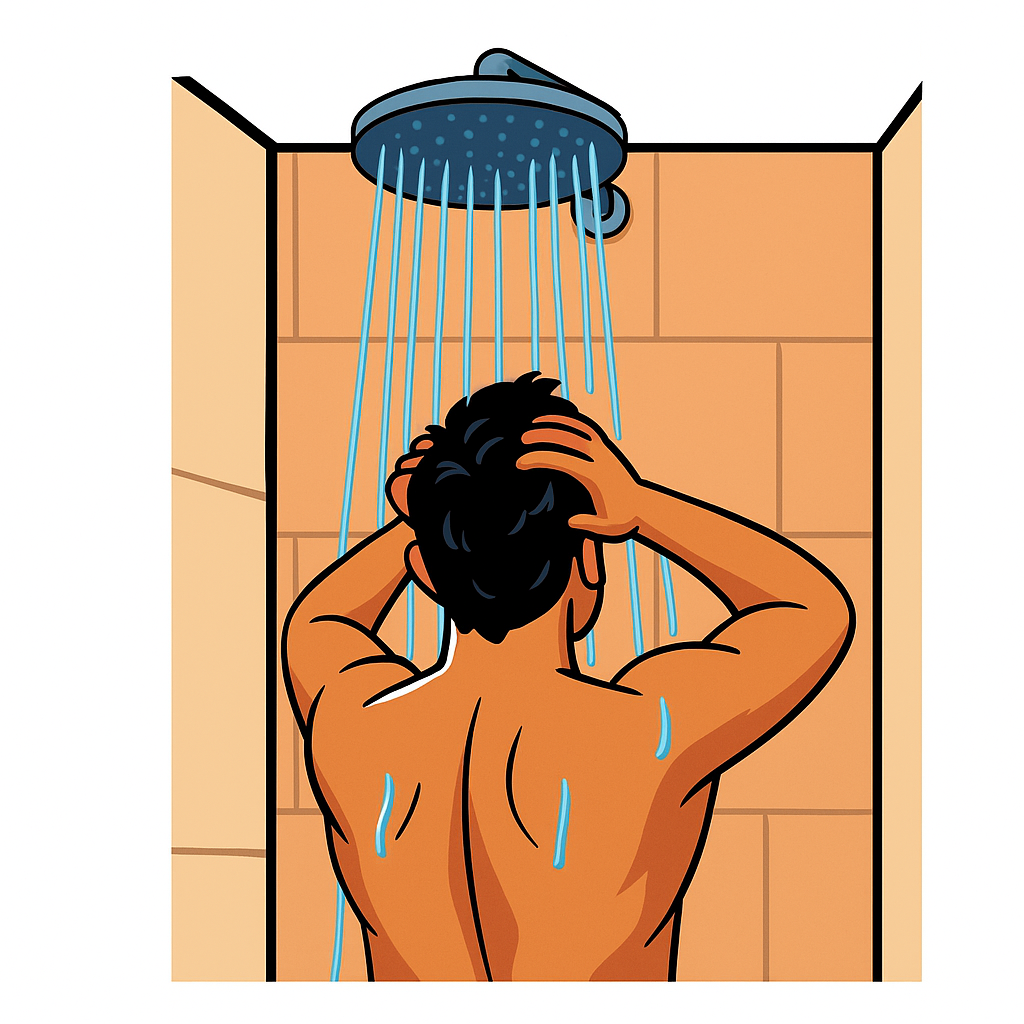When it comes to shaving, every man has his own ritual. Some grab the razor before stepping into the shower, others prefer to shave right after towelling off, and some even shave under the hot water. But which option actually gives you the smoothest shave, protects your skin, and fits into your lifestyle?

At Smartshave, we know shaving isn’t just about removing stubble. It’s about confidence, comfort, and caring for your skin while making sustainable choices. That’s why we’ve put together this complete guide to help you decide whether shaving before, after, or in the shower is best for you.
Shaving Before the Shower
Shaving before the shower is popular with men who want speed and efficiency. It feels quicker to grab your razor, tidy up your face, and then jump into the shower to rinse everything away.
Benefits of shaving before the shower
- Taut skin surface: Because your skin hasn’t been exposed to steam, it’s a little firmer. This can make it easier for the razor to glide smoothly.
- More prominent stubble: Dry whiskers stand up straighter, which can sometimes allow for a closer first pass.
- Convenience: You can shave quickly, clean up in the shower, and get out the door.
Drawbacks of shaving before the shower
- Tougher stubble: Dry facial hair is surprisingly dense—almost like copper wire. This makes the blade work harder, which can cause pulling and irritation.
- Higher risk of razor burn: Without moisture softening the hair, you’re more likely to experience redness, cuts, and nicks.
- Extra reliance on prep: You’ll need a good shaving cream or gel with soothing ingredients like aloe vera and vitamin E (both found in Smartshave’s shaving products) to reduce friction.
Shaving After the Shower
Barbers often use a hot towel before shaving for a reason—heat and steam soften stubble, open pores, and prepare skin. Shaving after the shower mimics this professional prep.
Benefits of shaving after the shower
- Softer hair: Steam makes stubble up to 70% easier to cut, meaning fewer strokes and less irritation.
- Cleaner skin: Washing in the shower removes oils and dirt, preventing clogged blades.
- Smooth finish: Warm skin allows the razor to glide easily for a close, comfortable shave.
Drawbacks of shaving after the shower
- Takes more time: If you’re in a rush, waiting until after the shower can feel like an extra step.
- Skin can be too soft: For some men, skin that’s overly relaxed might make it easier to over-shave, which can lead to sensitivity.
That said, for most men, shaving after the shower offers the best balance of closeness, comfort, and skin protection.
Shaving In the Shower
If you want efficiency without sacrificing comfort, shaving in the shower is a great option.
Benefits of shaving in the shower
- Constant hydration: Hair and skin remain soft under the steam.
- Reduced irritation: The razor rinses clean under running water, reducing friction.
- Less mess: No sink clutter—foam, hair, and water all wash away easily.
- Spa-like experience: The warmth and steam feel relaxing and soothing.
Drawbacks of shaving in the shower
- Visibility: You’ll need a fog-free mirror for accuracy.
- Missed patches: Without good visibility, it’s easier to overlook areas.
- Less precision: Trimming detailed edges (like beard lines) may be harder.
For many men, shower shaving strikes the right balance between speed, comfort, and cleanliness—especially with a reliable eco-friendly razor like those at Smartshave.
Dermatologist Insights
Dermatologists often recommend shaving after exposure to warm water. Why? Because hydrated hair shafts swell, making them softer and easier to cut. Less resistance means fewer micro-tears on the skin’s surface, which reduces irritation and prevents ingrown hairs.
If you have sensitive skin, a history of razor burn, or conditions like acne, dermatologists typically recommend shaving after the shower when the skin is clean, warm, and hydrated.
Shaving Myths Busted
- Myth 1: Shaving makes hair grow back thicker.
False. Shaving only cuts hair at the surface—it doesn’t change thickness or growth rate. - Myth 2: Cold water is better for shaving.
False. Cold water keeps hair tough. Warm water is better for softening stubble. - Myth 3: A five-blade razor is always superior.
Not always. Blade sharpness and technique matter more than blade count. A quality sustainable razor outperforms cheap disposables.
FAQs
Q: Does shaving in the shower cause acne?
No—if anything, shaving in the shower can reduce breakouts by keeping skin clean and pores clear. Just make sure you rinse your razor thoroughly.
Q: Is morning or evening shaving better?
It depends. Morning shaving keeps you looking fresh all day. Evening shaving gives skin time to recover overnight.
Q: How often should I change my razor blade?
Every 5–7 shaves for most men, depending on stubble thickness. Dull blades cause irritation and uneven results.
The Smartshave Routine
No matter when you shave, the products you use make the biggest difference. At Smartshave, we’ve designed razors and creams that balance performance with sustainability.
- Eco-friendly razors: Durable, sharp, and sustainable to reduce waste.
- Moisturising shave cream: Infused with aloe vera and vitamin E to cushion the skin.
- Subscription model: Fresh blades delivered to your door, so you never shave with a dull razor again.
Explore our full range at Smartshave.co.uk and upgrade your daily routine.
Final Thoughts
So, should you shave before, after, or in the shower?
- Shave before the shower if you value speed and don’t mind using extra prep.
- Shave after the shower if you want the smoothest, most comfortable shave.
- Shave in the shower if you want efficiency, hydration, and less mess.
The best method is the one that suits your skin and your lifestyle. But no matter what you choose, remember: the real secret to a great shave isn’t just timing—it’s the razor you use, the products you apply, and the care you give your skin.
At Smartshave, we believe shaving should be effortless, sustainable, and something you actually look forward to.
